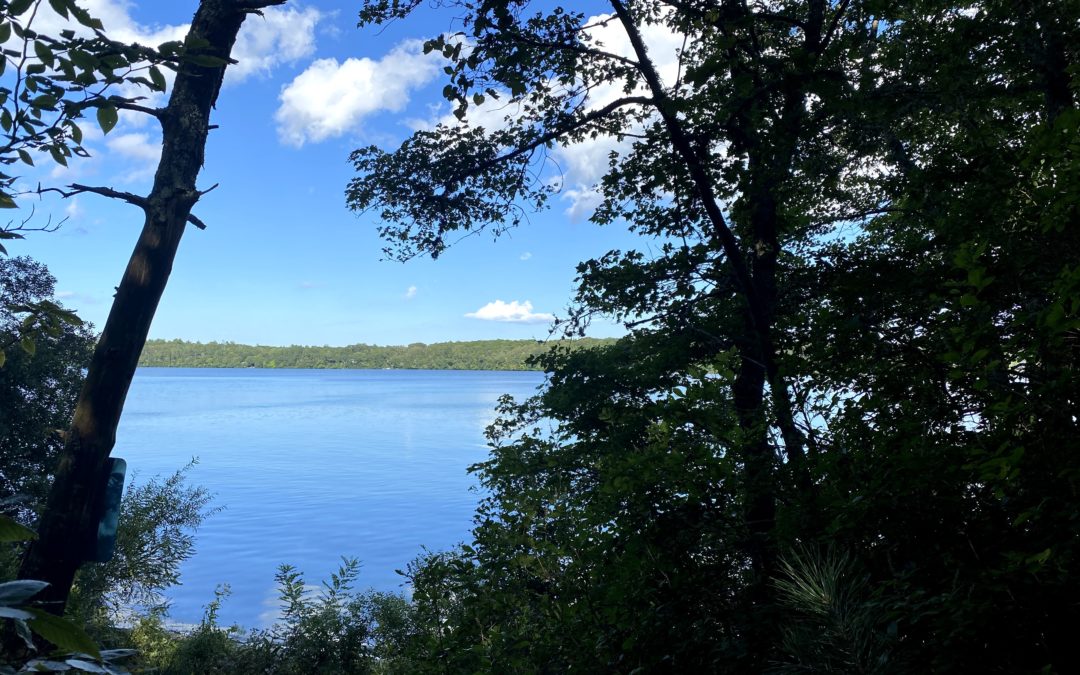Written by Marc Blesoff, July 2021
A few months ago, my granddaughter and I took a summertime walk to the local market. On the way home, the afternoon sun was at our back. In front of me I saw the shadow of an 8-year-old girl and her grandfather holding hands as they walked.
I was momentarily surprised that it was me, and then I smiled appreciatively. What a beautiful sight – my own shadow as an older person. What a wonderful image, and it was me!
Seeing that flash of shadow reminded me of both my present age as well as when I was an 8-year-old. I remembered growing up on Mashpee-Wakeby Pond. I’ve been on that lake since I was 5 years old.
Anytime I wanted, I’d run full-steam down the hill, arms outstretched like wings, and just plunge non-stop into the water. Ducks and frogs and minnows and turtles and sun-fish would make room for me. I loved the exhilaration of swimming underwater with my eyes open, surveying the lake bottom, and then bursting through the surface to lunge for a gulp of air and feel the warmth of the sun.
My older cousin and her husband were in the Air Force and stationed at Otis. He taught me how to swim up on and grab the turtles that were sunning themselves on the fallen trees. How exciting to that 8-year-old!
My granddaughter and I had been looking forward to jumping into the lake this past summer – perhaps jumping in as we are holding hands! That would have been another wonderful shadow to see. But that was before the Delta variant convinced me to hunker down again.
It was also before I read the email detailing how swimming had been banned in the lake because of cyanobacteria. What? No swimming? This lake is 15 miles around!
Cyanobacteria phytoplankton form the base of the food web of some freshwater ponds and streams. The presence of cyanobacteria is natural and important, but too much cyanobacterial growth (called blooms) leads to the release of dangerous amounts of cyanotoxins, which can poison wildlife, humans and pets. Over the past decade there have been some late Fall blooms of cyanobacteria in the lake, but never as early as mid-June and never enough to force people and pets out of the water.
Global warming, fertilizer run-off and septic tank seepage have combined to create blooms and to change the world I knew. Now, that world would have changed no matter what. Life is change. But this is harmful human-made change that is definitely not inevitable.
As we age, we have a continuing responsibility to be good stewards, good role models, and to work alongside younger people to right the wrongs. One aspect of aging with intention is to share and listen while forging intergenerational relationships.
Not everyone grows up on a lake, but all of us older people will have our own cyanobacteria in one form or another – systemic harm that hits close to home. It could be ecological security or economic security or health security or job security.
Toxic cyanobacteria blooms are one thing calling me to activism in my third third of life.
What calls to you to be part of aging with intention?
Got a Pond Story you want to share? Email Kristin Andres at [email protected]
Pond Stories are a collection of writings from Cape Codders and visitors who love the 1000 local ponds that dot the Cape. We hope this collection of stories, that are as much endearing as they are environmentally aware, will awaken your inner environmentalist to think deeper about our human impacts to these unique bodies of water. Check out these valuable resources to learn more about the current challenges Cape Cod ponds are facing and how you can be a better pond steward in your town.


